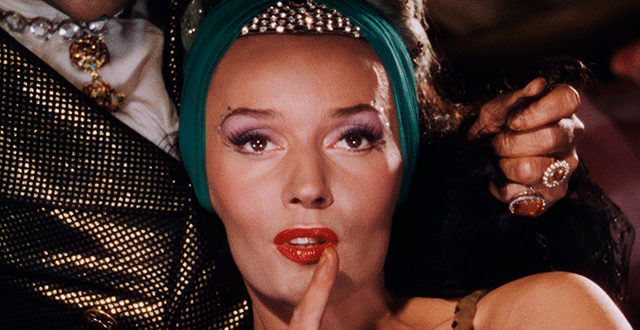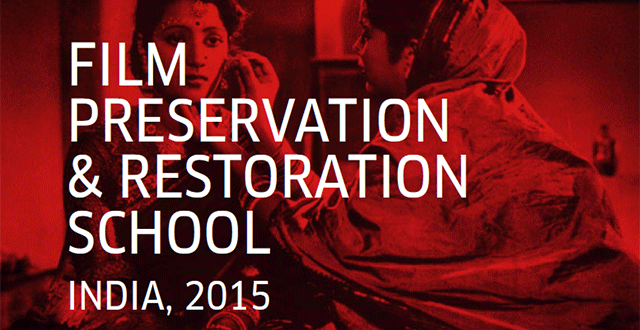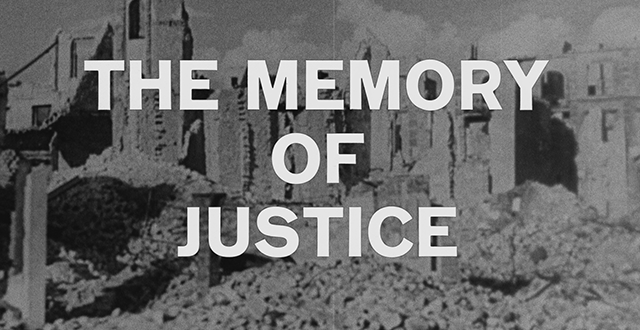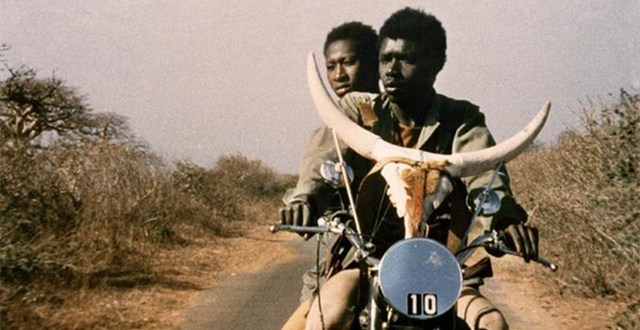News
An even more enchanting 'Tales of Hoffmann' after restoration
Susan King, Los Angeles Times
Martin Scorsese said it was a big influence on his films "Taxi Driver" and "Raging Bull." George Romero, director of the seminal zombie thriller "Night of the Living Dead," said it was the reason he became a filmmaker.
The "it" in question is Michael Powell and Emeric Pressburger's Technicolor masterpiece "The Tales of Hoffmann," which has entranced and influenced filmmakers since its release in 1951.
"Ten Commandments" director Cecil B. DeMille wrote the British filmmakers in 1952, telling Powell and Pressburger: "For the first time in my life I was treated to Grand Opera where the beauty, power and scope of the music was equally matched by the visual presentation."
In their beloved 1948 Technicolor film "The Red Shoes," Powell and Pressburger presented a story of love and art set in the world of ballet. In "Tales of Hoffmann," which was shot in just 17 days, they innovatively blended ballet with opera.
Except for singers Robert Rounseville, who plays Hoffmann, and Ann Ayars, who plays Antonia, the directors cast noted ballet dancers such as Moira Shearer from "The Red Shoes," Frederick Ashton (who also created most of the choreography), Robert Helpmann, Léonide Massine and Ludmilla Tchérina to bring this adaptation of Jacques Offenbach's 1881 opera to life.
The dancers lip-synced to a recorded score conducted by Thomas Beecham and performed by opera singers.
"They were just out there with his," said longtime Scorsese film editor Thelma Schoonmaker, who was married to Powell from 1984 until his death in 1990. "It was a gutsy decision instead of using real opera singers to use dancers because of their dramatic movements."
" 'Tales of Hoffmann' was a daring and bold thing to try," said Margaret Bodde, executive director of the Film Foundation, which Scorsese began 25 years ago to preserve and restore motion pictures. "The film is like an experimental film. If you read the description of the production, you wouldn't have imagined it would have come out as well. It holds your interest in a way that you wouldn't imagine a film like this would. "
Now, 64 years after its initial release, "Tales of Hoffmann" has been digitally restored by the Film Foundation and the BFI National Archive in association with Studiocanal. Scorsese, Schoonmaker and Ned Price, vice president of mastering for Warner Bros. technical operations, supervised the restoration work, which was completed by Warner Bros. Motion Picture Imaging.
This restoration, which opens Friday for a weeklong run at Cinefamily at the Silent Movie Theatre in Los Angeles, brings out all the detail in Hein Heckroth's lush production and costume design and Christopher Challis' vivid Technicolor cinematography. The new version also includes six minutes of footage that was cut before its original release, as well as an epilogue.
The original 35-millimeter Technicolor three-strip nitrate camera negative and 35-millimeter original soundtrack negative from the British Film Institute vaults were used for the restoration. The material for the added footage was also discovered at BFI.
Those involved with the Film Foundation Technicolor restorations of Powell-Pressburger's "The Red Shoes" and "The Life and Death of Colonel Blimp" from 1943 had to contend with mold on the original negatives. But that wasn't the case with "Tales of Hoffmann."
"It was in quite good condition," Price said. "We dealt with the normal shrinkage, which is inevitable with film. Over time, they lose moisture. They shrink and they warp differently. But we aligned the three strips, and they matched perfectly."
Schoonmaker, who also supervised the restoration of "Red Shoes" and "Blimp," said the team was "very lucky that we could concentrate on the color and the detail instead of having to spend a lot of money on cracks and mold and dirt."
For years, fans of the film have talked about missing footage, Schoonmaker said.
"Scorsese and I didn't know what that was," she said. "Finally, when we started getting all the elements together, the woman at the British Film Institute scoured the vaults and found the missing six minutes."
That footage involved a dramatic and critical sequence in the third act in which Hoffmann has fallen in love with the young opera singer Antonia, who has consumption and whose conductor father has forbidden her to see Hoffmann or to sing.
The film's producer Alexander Korda hated the third act, Schoonmaker said.
"He wanted it cut entirely, and Michael refused," she said. "The assistant editor was in the room when this conversation took place, and she personally told me that Korda threatened Michael with ruin if he didn't drop the entire third act. So as some sort of comprise, they chopped those six minutes out, and it really ruined the third act."
Everyone was surprised, though, when they saw the epilogue footage, which is a curtain call in which the dancers are paired with the opera singers who sang their parts. The sequence had no sound, so the team added music and applause over the sequence.
"I said, 'We have to use it, it's so fascinating,' " Schoonmaker said. "I'm sure they wanted it in the film. It's so witty.
The Film Foundation's Bodde said the epilogue is one of her favorite parts of "Tales of Hoffmann."
"It lends such a note of whimsy and the creative spontaneity that you always feel in a Powell- Pressburger film," she said.
Schoonmaker, who is in Taiwan working on Scorsese's new film "Silence," will appear via Skype after the 6:30 p.m. Saturday screening at the Cinefamily.
'The Tales of Hoffmann'
What: Thelma Schoonmaker, who helped to oversee restoration of the 1951 film, will appear via Skype for a discussion after a screening of the film
When: 6:30 p.m. Saturday
Where: Cinefamily at the Silent Movie Theatre, 611 N. Fairfax Ave., Los Angeles
Admission: $12
Info: (323) 655-2510, http://www.cinefamily.org
What Martin Scorsese’s Doing to Preserve India’s Film Archive
The Wall Street Journal India
India has one of the world’s most-prolific film industries but preserving its output for future generations of filmgoers is proving difficult.
“We have lost a colossal amount of our film heritage and we continue to lose some everyday,” says Shivendra Singh Dungarpur, award winning filmmaker and founder of the Mumbai-based Film Heritage Foundation. He has teamed up with Hollywood director Martin Scorsese’s nonprofit The Film Foundation and a film restoration laboratory based in Italy, to launch India’s first film restoration school.
“Cinema is an art form and a part of our cultural heritage that needs to be preserved. The aim of the school is to create passionate future archivists,” says Mr. Dungarpur.
The school opened on Sunday, with a week-long course with students from India, Bhutan, Nepal and Sri Lanka. “The reason we wanted to include these countries is because they all have film legacies that have been terribly neglected and will be lost to the world if they don’t start preserving their cinema,” says Mr. Dungarpur who has restored the film “Kalpana” and Sri Lankan film “Nidhaniya” in collaboration with the Scorcese foundation. The course will be organized in the Films Division headquarters in Mumbai as a pilot.
Lectures, presentations and practical classes on film preservation and restoration that will be conducted by leading international experts in the field.
There will also be daily screenings of a restored classic preceded by a talk on the restoration of the footage. “Each of the students will be given a film to be restored. One need not have technical knowledge of cinema for this, just the passion for it,” Mr. Dungarpur added.
The international faculty for the course includes Andrea Kalas, vice-president of the Paramount Pictures Archive, Lee Kline and Ryan Hullings who are working on the restoration of Satyajit Ray’s “Apu Trilogy,” Maciej Molewski who has restored some of Poland’s best-loved classics and Professor Ray Jiing, who started the film preservation movement in Taiwan.
Part of the idea behind the film preservation school is that movie preservation restoration in India is abysmal.
From the silent movie era, there are just five or six films available today.
“We have only one archive: the NFAI, Pune,” Mr. Dungarpur adds. “This serves the largest and one of the most diverse film industries in the world.”
But in a country where on an average 2,000 films are made a year, it is a mammoth task for any archive to preserve them all. “Add to that lack of funding, trained personnel and resources, and it becomes unmanageable,” he said.
In the recent past, most film laboratories in India have shut down their photochemical facilities along with the storage areas where some producers have traditionally kept their prints and negatives after release.
Mr. Dungarpur believes that a film represents an era, a period in history, time and space and the people who lived then and old movies are part of the future of the industry.
“The only way to move forward is by looking back,” he states.
PRESS RELEASE: BERLINALE TALENTS 65TH BERLINALE
Berlinale Talents
Cracking open and reconfiguring notions of spatiality will be high on the agenda for this year’s edition of Berlinale Talents. Under the focus “2015: A Space Discovery”, the summit will host a star-studded cast of professionals to convene from February 7 to 12 at the HAU Hebbel am Ufer theatres in Berlin to discuss and work with the 300 invited Talents and public audiences.
To kick it all off, president of the International Jury Darren Aronofsky (Black Swan) and fellow jurors get the topic rolling with an in-depth discussion on how they have sculpted space in their own films. The panel “Road, Movie: Films in Motion” brings German director Sebastian Schipper from the Competition programme (Victoria) together with Walter Salles (On the Road). Both will keep track of their protagonists’ cinematic journeys through space and time. Bong Joon-Ho (Snowpiercer) and producer Lorna Tee (Postcards from the Zoo) talk about movies crossing the border from their local birthplaces to international audiences. Legendary German auteur Wim Wenders (Paris, Texas), this year's Berlinale Homage subject, takes the stage in a joint event with the Deutsche Kinemathek - Museum für Film und Fernsehen to shed light on his career which has spanned a multitude of genres, formats and continents. Director Ursula Meier (Sister), who presents a short film at this year’s Generation programme, grants insight into her relationships on set with actors of all ages.
In cooperation with Medienboard Berlin-Brandenburg, German director Andreas Dresen, together with his longtime screenwriter Wolfgang Kohlhaase and best-selling book author Clemens Meyer, explores the short period 25 years ago when space in East Germany seemed unlimited and that is the setting for his Competition film As We Were Dreaming. Oscar®, Golden Globe and Grammy-winning composer Howard Shore (Maps To The Stars, The Lord of the Rings) will be on hand in Berlin to elaborate how a film's score and sound create spaces in which stories unfold.
Movie theaters from Beirut to Cairo, spaces for exhibiting films and bustling hubs of alternative culture, are in the limelight during the panel “Crossroads to Culture - Cinema(s) in the Arab World”. Also with focus on the Arab countries, Berlinale Talents will host the award ceremony for the “Film Prize of the Robert Bosch Stiftung for International Cooperation”. A truly intercontinental panel in cooperation with Berlinale NATIVe and the Federal Foreign Office delves into the cultural spaces of Africa, Latin America and India, in search of the roots of local storytelling traditions.
A discussion between director Joanna Hogg (Exhibition) and architect Matthias Sauerbruch explores how a house can become an actual character in a film and dictate human relations. Film choreographer Francesca Jaynes and puppeteer Mikey Brett (War Horse), both having worked with Sandra Bullock and George Clooney in Alfonso Cuarón’s Gravity, will tackle how actors create movement in spaces beyond limits.
Several panels will focus on the power of film and filmmakers to influence and inspire social and political changes. Academy Award nominee Laura Poitras (Citizenfour) joins Berlinale Talents for an interactive webcam session on her role as a documentarist, while Joshua Oppenheimer (The Act of Killing) and Marcel Ophüls (The Memory of Justice) discuss the chosen ways of their films to look back into history and preserve cinematic spaces of remembrance. Together with Andy Bichlbaum and Mika Bonanno, better known as the activist duo The Yes Men, director Laura Nix (The Yes Men are Revolting) will discuss how guerrilla filmmaking and the weapons of humour can help hacking public and private spheres.
In partnership with Canon, Berlinale Talents offers an array of activities. Acclaimed DoP Peter Zeitlinger (Queen Of The Desert) will give a masterclass on his multiple collaborations with directors Werner Herzog and Ulrich Seidl. A two-day lightening and grading workshop with DoP Franz Lustig (How I Live) will focus on creating and defining cinematic space with the power of light. DoP Stefan Ciupek (127 Hours) and colourist Dirk Meier (Antichrist) will present their “Survival Guide to Digital Workflows”, discussing substantial details of working with the latest technologies.
More information at: www.berlinale-talents.de
Berlinale Talents is an initiative of the Berlin International Film Festival, a business division of the Kulturveranstaltungen des Bundes in Berlin GmbH, funded by the Federal Government Commissioner for Culture and the Media, in cooperation with Creative Europe MEDIA, a programme of the European Union, Robert Bosch Stiftung, Medienboard Berlin-Brandenburg and Canon.
Week-Long Theatrical Run for Mati Diop’s 'Thousand Suns' & Uncle Djbril Diop Mambéty’s 'Touki Bouki'
Tambay A. Obenson
In what will be a special week-long theatrical run at MoMA in NYC - for which the filmmaker, Mati Diop, will be present - two of her films ("Atlantiques" (2009) and "A Thousand Suns" (2013)) will be paired, along with the seminal 1972 film, "Touki Bouki," made by her uncle, the late Senegalese auteur, Djibril Diop Mambety.
The week-long (January 20–27, 2015) run is a collaboration between MoMA and UniFrance Films, whose new initiative, Young French Cinema, promotes emerging French filmmakers in North America in partnership with the Cultural Services of the French Embassy.
"Touki Bouki" will also be shown 3 times over the course of the week-long theatrical run, in a new digital restoration by the World Cinema Foundation.
Meanwhile, Mati Diop's "Mille soleils" ("A Thousand Suns"), explores the legacy of "Touki Bouki," as she journeys in search of her origins through the footprints left by the film her late uncle made, and along the way gets to know "Touki Bouki's" 2 main actors, 35 years later.
Based on his own story and script, Djibril Diop Mambéty reportedly made "Touki Bouki" with a $30,000 budget. Often compared to films of the French New Wave, Mambety puts his stamp on a film that incorporates stylistic flourishes that were considered uncharacteristic of most African films at the time. The film both highlights and struggles with the hybridization of Senegal.
There's an insolence that’s expressed in it, we could say, a freedom from formality, as well as a great sense of humor.
As his niece Mati Diop has insisted, it’s also the film where her uncle reveals himself the most.
Her exploration of "Touki Bouki" is an interesting, worthwhile watch. I don't believe a documentary has ever been made that celebrates the film, and considers its legacy, given its significance in African cinema history.
It's a film (and I could name several others) that really deserves its proper restoration and re-release in HD, preserving, but also reintroducing it to new generations, and those who are just not aware of it.
Mati Diop studied at Le Fresnoy (National Studio of Contemporary Arts) and Le Pavillon (an art residency of the Palais de Tokyo). Her films have screened worldwide to acclaim.
If you'll be in NYC this week, from January 20–27, 2015, add this week-long run to your calendar.
Check out the list of screening days and times for each film here.




